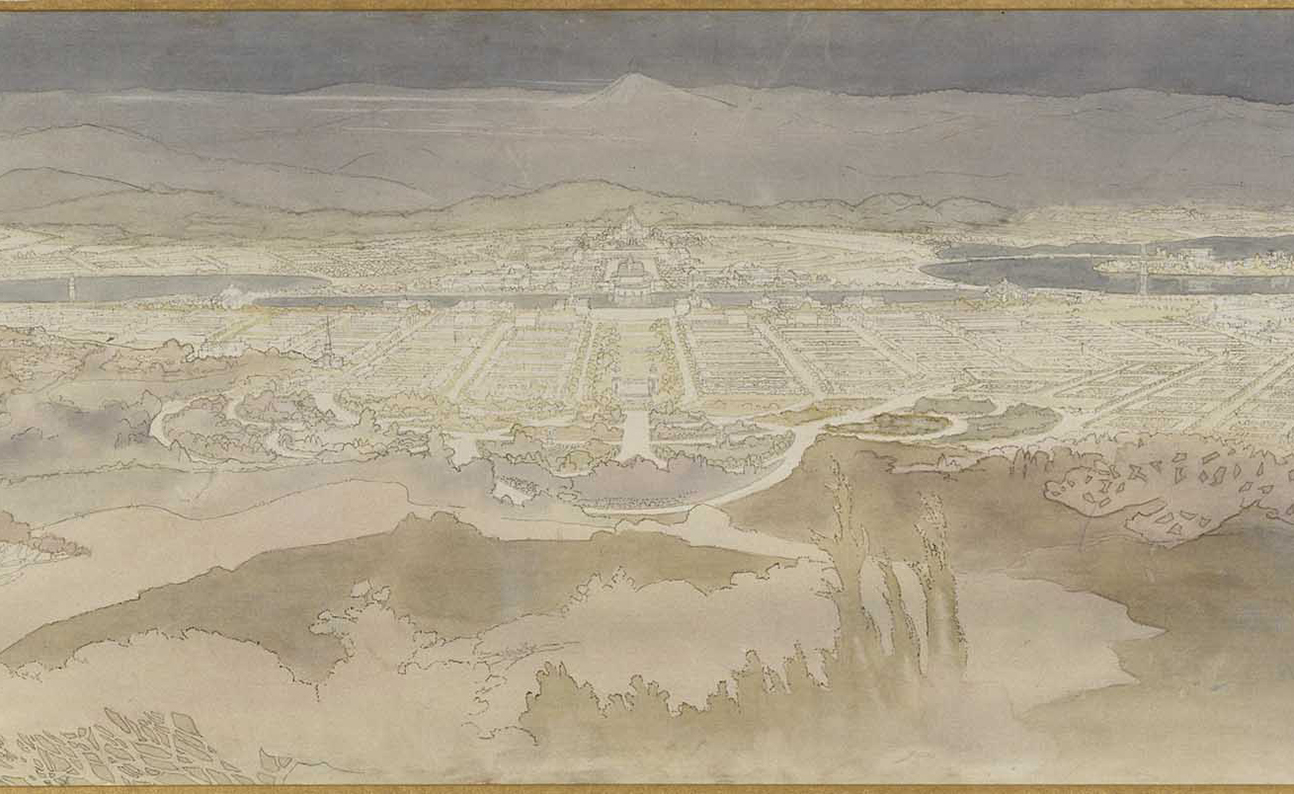
Watercolor from a plan submitted to a design competition in Canberra, Australia, by Marion Mahony Griffin and Walter Burley Griffin, c. 1911.
• Is it possible that Henry David Thoreau is—still—misunderstood? “Who among us would not benefit from twelve bargain months of freedom? In real life, Thoreau never got that time. The small house by the pond—he always calls it a house, not a hut or cabin—was a literary lab for free days and weekends, intended from the first as a temporary structure, as its sand cellar and rough-laid foundation attest. Philosopher lairs were fashionable then, in England and America; antebellum Concord had several. In his front yard, Bronson Alcott reposed in a bower of branches, hoping for admirers. The chief local celebrity, Ralph Waldo Emerson, planned a retreat for the woodlot he owned on Walden. He hacked brush and imagined designs until he lost interest and let Thoreau use the site instead. For years Emerson had hired his serious young neighbor as handyman, editorial assistant, and au pair; his casual question when Thoreau finished college—‘do you keep a journal?’—altered the course of American letters.” (The American Scholar)
• Egyptology, Paris in the 1780s, and tarot cards—a surprising history. (Aeon)
• The life and legacy of Marion Mahony Griffin, whose complicated relationship with architect Frank Lloyd Wright shaped both of their careers: “Chicago burned the year that Mahony Griffin was born, and from those ashes grew a city that would seed her life and career. Marion Mahony Griffin was born in the city in February 1871, to Jeremiah Mahony, an Irish journalist and teacher who would die young, and Clara Perkins, who would become a well-known school principal. When the family home was threatened by the conflagration, the Mahony family moved north to what is now the North Shore’s Winnetka area. Currently known for mansions that boast tennis courts and media rooms and wine cellars and guest houses, the area then was rural. The landscape, still marked by windy beaches and giant, ancient trees, made a mark on young Marion that influenced her throughout her career.” (Curbed)
• A collection of stories focusing on LGBTQ histories. (JSTOR Daily)
• Considering Madame Bovary’s wedding cake: “The description of the cake served at Emma Bovary’s wedding is embedded in the unfolding of a rustic celebration at which guests doggedly eat vast quantities and devote themselves to coarse pleasures, lifting weights and grabbing women—boorish larks whose ingenuous foolishness is immune to accusations of bad taste. In this rural, archaic milieu, the cake is a foreign body greeted with cries of astonishment: an exotic spectacle.” (Paris Review Daily)
• Tracing the origins of the Mafia to citrus growing in nineteenth-century Sicily. (Atlas Obscura)